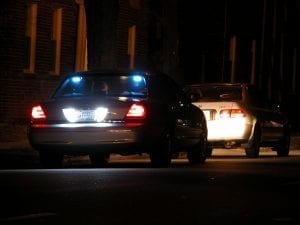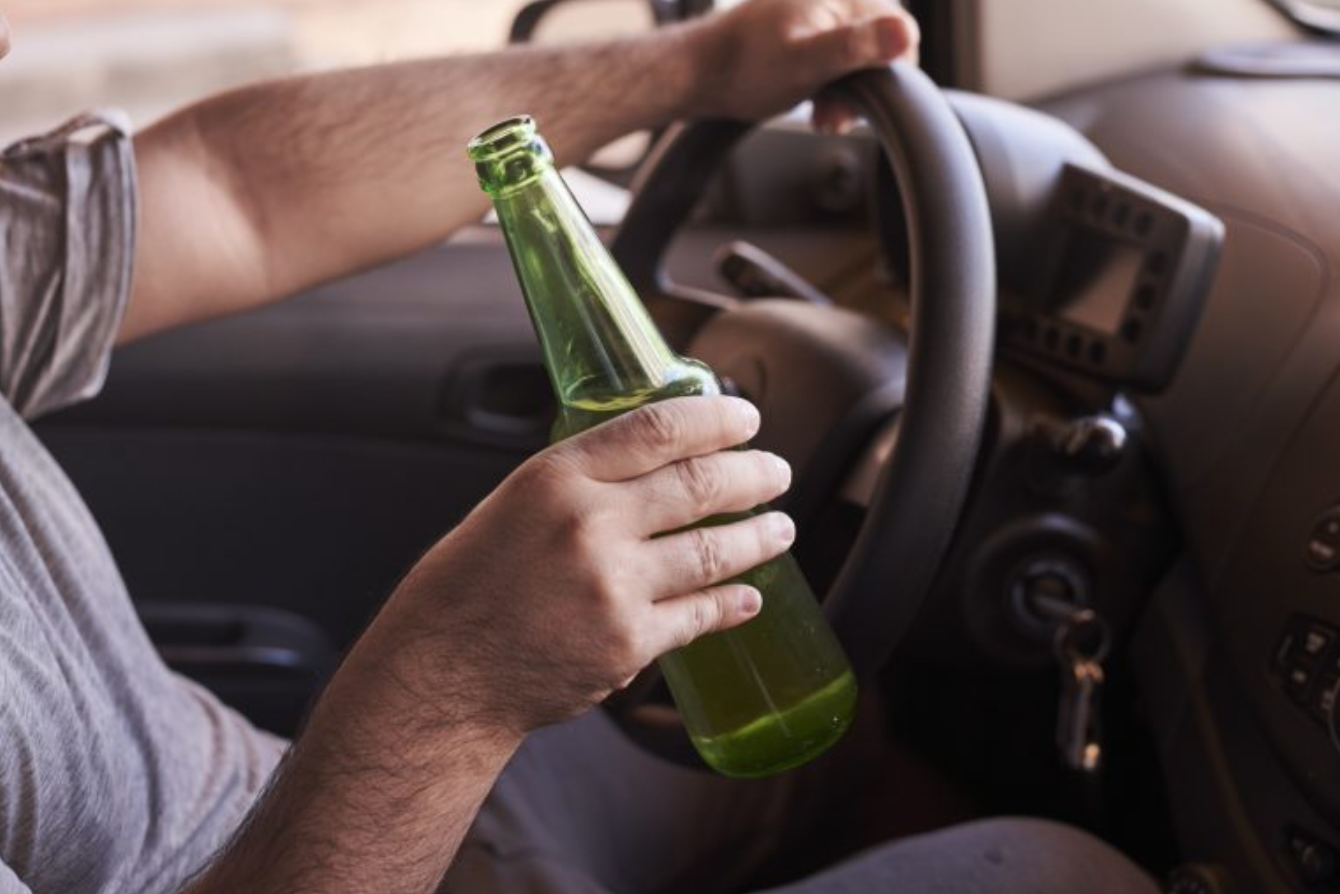A drunk motorist might put their turn signal on long before turning or may turn it on in the middle of a sudden turn.
Drunk drivers are out there, but you may not know what signs to look for to protect yourself from impaired drivers. If you or someone you care about has been injured by a drunk driver’s negligence, consult with a Texas personal injury attorney.
How Alcohol Affects Drivers
In Texas and most other states, motorists who drive with a blood alcohol concentration (BAC) of .08 or above are over the legal limit and can face drunk driving charges. However, motorists don’t have to be over the limit to experience the dangerous effects of alcohol while driving.
The National Highway Traffic Safety Administration (NHTSA) reports the effects of an increasing BAC on drivers:
- At .02 BAC, there is some judgment loss, slight mood changes, declines in visual functioning, and decreased multitasking ability, which is required to drive safely.
- At .05 BAC, behaviors are exaggerated and small-muscle control, such as focusing one’s eyes, can become difficult. Some people experience elevated mood, increased impairment of judgment, loss of inhibitions, and lowered alertness, which make safe driving difficult.
- At .08 percent BAC, drivers lose muscle coordination, which leads to problems with balance, speech, reaction times, vision, and hearing. They can also have difficulty assessing danger, controlling themselves, and employing good judgment. Memory can also be impaired.
- At .1 percent BAC, motorists experience significant loss of control and slowed reactions. Motorists may have slurred speech, poor coordination, and slowed thinking.
- At .15 percent BAC, drivers have far less muscle control, and balance can be a serious issue.
When the driver who injures you is charged with DWI, it can be easier to prove negligence. However, even if they aren’t charged, there may be evidence that supports impairment. Your personal injury attorney will take the steps necessary to build a strong claim.
Look out for These Signs
While impaired driving can play out in myriad ways, the following behaviors are some of the classic signs:
- A driver who can’t stay in their lane or who hugs the centerline
- A driver who ignores traffic signs, lights, and signals – or reacts to them inconsistently
- A driver who accelerates and decelerates needlessly
- A driver who drives too fast or too slow
- A driver who consistently tailgates
- A driver who is erratic
- A driver who swerves in and out of lanes
- A driver who signals erratically or inconsistently
Any of these behaviors can prove dangerous on the road.
Not Staying in a Lane
We’ve all encountered motorists who drift over the line only to correct themselves and start again. This behavior can be a sign of distraction, like texting while driving, but it’s most closely associated with impairment.
Drunk drivers experience slowed reaction time and loss of control, producing drivers who just can’t stay in their lane – but not for lack of trying.
Some impaired drivers go a different direction and carefully hug the centerline in an effort to stay in their lanes, which is a hallmark of drunk driving. Impaired drivers have difficulty concentrating, but staying next to the centerline can provide a false sense of security.
Impaired drivers often go to great lengths to appear sober. In the process, they appear drunk.
Ignoring Traffic Signs
Some drunk drivers don’t take traffic signs, lights, and signals seriously – or don’t see them at all – and simply ignore them. Others have an odd reaction to traffic signals. A drunk motorist may stop short of where they should for a stop light or may stop for a green light.
Drunk drivers are dangerously unpredictable, which makes distancing yourself from them the best policy.
Accelerating and Decelerating
Impaired drivers often recognize that they’re impaired and go to considerable but misguided lengths to compensate. They may slow way down in an effort not to exceed the speed limit, then speed way up when they realize they’re crawling along.
The impairment caused by alcohol makes it difficult to assess one’s speed and navigate the road safely, which can get drunk drivers into trouble and makes our roads more dangerous.
Impaired drivers also tend to brake excessively and may take a long time to accelerate. This exaggerated caution is meant to compensate for impairment, but it only exacerbates the problem.
Won’t Stop Tailgating
Impaired drivers typically don’t tailgate other drivers to be annoying. They tailgate to have a guide. Drunk drivers cannot absorb all the information necessary to drive safely, and some tailgate in response.

The reasoning behind this behavior seems to be that if they just follow the driver ahead closely enough, they won’t appear impaired. In the process, they highlight that they’re under the influence and endanger other drivers.
When impaired motorists choose to tailgate, they greatly increase the risk of rear-end accidents. Such accidents are common and dangerous.
If someone is riding your tail even though there are plenty of empty lanes, the driver may be over the limit. In this situation, exiting the road may be the safest plan.
Erratic Driving
If we could focus on only one telltale sign of drunk drivers, it would be erratic driving. Drunk drivers are unpredictable, and it’s difficult to know what they might do next. When you encounter a motorist on the road whose driving seems odd – even if you can’t put your finger on why – there’s a good chance they are impaired.
Swerving in and out of Lanes
Some impaired drivers seem to forget that they share the road. Because their judgment and control are affected, they swerve in and out of traffic, which is extremely dangerous.
Signaling Erratically
We use turn signals to let other drivers know our intentions, allowing them to alter their driving accordingly. Signaling helps keep our roads safe, but impaired drivers often lose track of how signals should be used.
A drunk motorist might put their turn signal on long before turning or may turn it on in the middle of a sudden turn. It’s difficult to say how a drunk driver will use turn signals, but it’s safe to say that they’re unlikely to use them correctly.
A Note about Deadly Traffic Accidents
Drunk drivers cause some of the deadliest accidents. They’re more likely to head the wrong way down one-way streets or leave their lanes and cause life-threatening head-on collisions. Alcohol plays a primary role in many fatal accidents, including rollovers and pileups.
Your Losses in an Accident Caused by a Drunk Driver
If you’re injured by an impaired driver in an accident, seeking compensation for your losses can help you reach your most complete recovery. Accidents can have a long-term impact on your life, so acting quickly to get compensation will be crucial to your recovery.
In addition to losses related to property damage to your vehicle and its contents, your claim will focus on three loss categories.
Medical Expenses
The medical costs you face will begin with emergency treatment at the scene of the accident and can extend to all the following costs:
- Emergency transportation from the scene
- Surgery and follow-up care
- Hospitalization and attendant care
- Medical treatments, tests, and procedures
- Doctor and specialist care
- Pain management
- Prescription medications
- Physical and occupational therapy
- Rehabilitation
- Home health care
- Adaptive physical devices
If your injuries are serious, lead to complications, or cause secondary health concerns, you will likely require ongoing medical care and may have future healthcare needs that must be factored into your car accident claim.
Lost Income
If the car accident leaves you off the job, you may face significant income loss. If your ability to do your job or advance your career is affected, it translates to long-term losses that can prove financially devastating. Serious career setbacks can also cause emotional suffering that is challenging to overcome.
Physical and Emotional Pain and Suffering
You must also consider your physical and emotional pain and suffering. This category of significant loss is more difficult to calculate and represent. Your personal injury attorney will represent all of your losses, including your pain and suffering.
Proving the Other Driver’s Negligence
If you were injured in a car accident caused by someone whom you believe was drunk, it’s important to tell the police immediately. You should inform them of any signs of drunk driving you witnessed.
Proving the other driver’s impairment will require evidence in any of the following forms:
- Police reports
- Your account of the accident
- Your account of the other driver’s suspicious driving
- Photos and videos from dashcams, security cameras, or phones
- Physical evidence from the accident
- Eyewitness accounts
- Expert testimony
- Accident recreation models
Personal injury claims are predicated on evidence, and your attorney is prepared to gather all the relevant evidence for your personal injury case to build your strongest claim.
Turn to an Experienced Personal Injury Attorney for Help
If you are injured by a drunk driver, your losses can have a lasting impact on your life. You need the guidance of an experienced Texas personal injury attorney to help you get the compensation you need to make your fullest possible recovery.


Join the conversation!